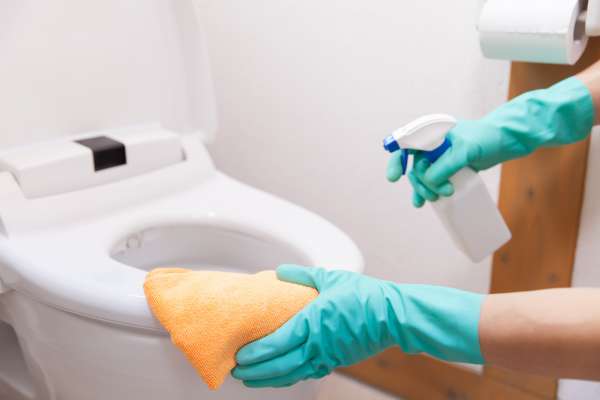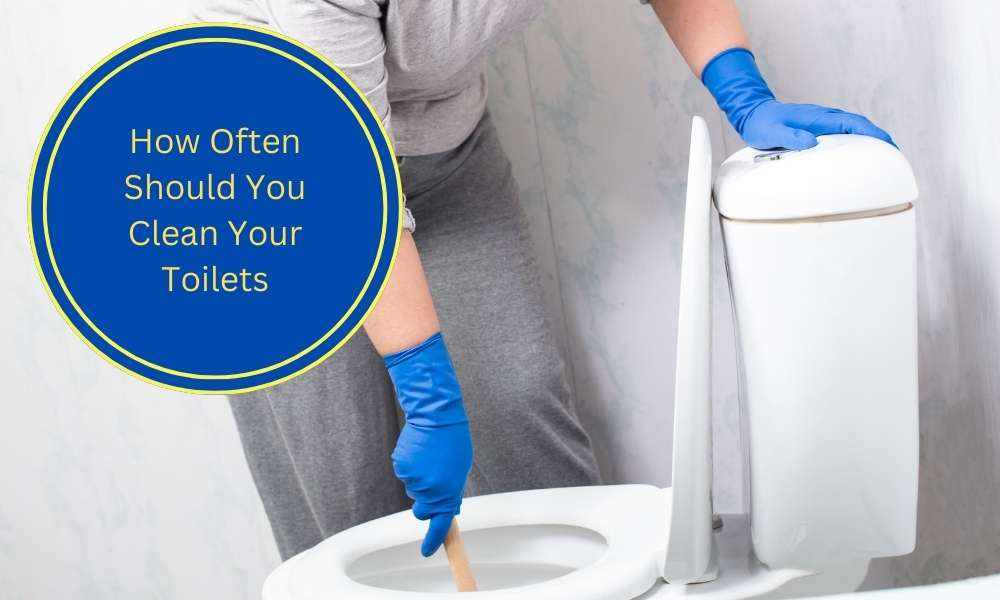Maintaining a clean and sanitary bathroom is crucial for both hygiene and comfort, and one of the key elements in this endeavor is regular toilet cleaning. The question of “How Often Should You Clean Your Toilets” is one that often lingers in the minds of conscientious homeowners seeking to strike a balance between cleanliness and practicality. A well-maintained toilet not only enhances the overall cleanliness of the bathroom but also contributes to a healthier living environment. In this discussion, we will explore the optimal frequency for lavatory cleaning, taking into consideration factors such as usage patterns, household size, And the importance of adopting effective washing practices. By understanding the ideal balance, individuals can ensure A hygienic bathroom environment without unnecessary or excessive washing efforts.
Are Automatic Toilet Bowl Cleaners Effective?
The pursuit of maintaining a clean lavatory, many homeowners explore various cleaning solutions, and automatic toilet bowl cleaners have gained popularity. These products, designed to provide continuous washing and freshness, raise questions about their effectiveness. Exploring the merits and potential drawbacks of automatic toilet bowl cleaners becomes integral to the broader discussion of how often one should clean their Toilets Work. Evaluating the efficacy of such innovations allows homeowners to make informed decisions regarding the most suitable and efficient methods for maintaining optimal lavatory hygiene.
1. Importance Of Toilet Cleanliness

Maintaining a clean toilet is paramount for both hygiene and overall well-being. The toilet, being a frequently used fixture in any household, is susceptible to the buildup of bacteria, germs, and unpleasant odors over time. Regular lavatory cleaning not only ensures a visually appealing and fresh-smelling bathroom but also plays a crucial role in preventing the spread of harmful pathogens. A clean lavatory contributes significantly to a healthier living environment and is essential in promoting good personal and public health.
2. Factors Influencing Cleaning Frequency

The frequency with which one should clean their toilet is influenced by various factors. Household size, frequency of use, and the presence of children or pets can impact The accumulation of dirt and bacteria in the lavatory bowl. Additionally, the type of cleaning products used and the water quality In a particular area can influence how quickly stains and mineral deposits develop. By considering these factors, individuals can tailor their washing routines To effectively address the specific needs of their household, ensuring that The lavatory remains not only aesthetically pleasing but also a hygienic space.
3. Signs Your Toilet Needs Cleaning

Recognizing the signs that indicate a lavatory needs cleaning is crucial for maintaining a proactive approach to hygiene. Lingering odors, stains in the bowl, or the presence of mineral deposits are clear indicators that washing is overdue. Discoloration or a visible ring forming in the toilet bowl can be signs of bacterial growth and should prompt immediate attention. Regular visual inspections and awareness of usage patterns are essential in identifying these signs early on, allowing homeowners to establish a cleaning routine that aligns with the unique requirements of their household.
4. Recommended Cleaning Schedule

Establishing a consistent and effective washing schedule is essential in ensuring the long-term cleanliness and hygiene of your toilet. While the frequency of cleaning may vary based on individual circumstances, A general recommendation is To clean your toilet at least once a week. However, households with higher usage or specific hygiene needs may benefit from more frequent cleaning. It’s crucial to strike A balance that prevents the accumulation of bacteria and stains without resorting To excessive washing, which can contribute To unnecessary wear and tear. Regular maintenance ensures that your lavatory remains a pristine and sanitary fixture in your home.
5. Choosing The Right Cleaning Products

Selecting the appropriate cleaning products is pivotal in achieving optimal toilet hygiene. Different toilets and water conditions may require specific formulations. Mild cleaners with disinfectant properties are often recommended to combat bacteria effectively. Additionally, eco-friendly options are gaining popularity for those seeking sustainable washing solutions. Understanding the composition and compatibility of washing products with your lavatory material is crucial to avoid damage. By making informed choices, homeowners can maintain a clean toilet while minimizing the environmental impact of their cleaning routine.
6. Proper Cleaning Techniques

Efficient cleaning goes beyond using the right products; it involves employing proper techniques to achieve thorough and effective results. Start by applying the cleaner evenly, paying attention to hard-to-reach areas around the rim and under the bowl. A dedicated toilet brush with sturdy bristles facilitates effective scrubbing, ensuring the removal of stains and bacteria. It’s essential to clean not only the bowl but also the exterior surfaces, including the flush handle and tank. Rinsing the brush thoroughly after each use prevents the transfer of germs and promotes a more hygienic cleaning process.
7. Common Mistakes To Avoid
In the pursuit of a clean toilet, certain common mistakes should be avoided to prevent damage and ensure effective cleaning. One such mistake is the overuse of harsh chemicals, which can erode the toilet’s finish over time. Neglecting to clean the flush handle and surrounding areas is another oversight that can compromise overall hygiene. Additionally, using abrasive washing tools can scratch the porcelain surface, making it more susceptible to stains. By being mindful of these common mistakes, homeowners can optimize their cleaning routine and maintain a hygienic toilet without inadvertently causing harm to the fixture.
8. Benefits Of Regular Toilet Maintenance
Regular toilet maintenance extends beyond mere cleanliness, offering a multitude of benefits for both the fixture And its users. One primary advantage is the prevention of plumbing issues such as clogs and leaks, which can lead to costly repairs. Additionally, consistent cleaning reduces the likelihood of permanent stains and mineral deposits, preserving The aesthetic appeal of the lavatory. From A hygiene perspective, regular maintenance significantly decreases the presence of harmful bacteria and germs, contributing to a healthier living environment. Ultimately, The investment of time in routine lavatory care pays off In terms of durability, functionality, and the overall well-being of your home.
9. Eco-Friendly Toilet Cleaning Practices
As environmental consciousness continues to grow, adopting eco-friendly toilet washing practices is both responsible and beneficial. Opting for biodegradable and non-toxic cleaning products minimizes the impact on ecosystems while ensuring A clean and sanitary lavatory. Water conservation is another critical aspect, and using efficient flushing systems or dual-flush toilets reduces water wastage during each use. Additionally, incorporating sustainable cleaning tools, such As reusable and washable washing cloths, aligns with eco-conscious principles. By embracing these practices, individuals contribute to environmental preservation while maintaining a high standard of toilet hygiene.
Conclusion
The quest for a clean and well-maintained toilet, it becomes evident that the frequency, products, And techniques employed in the washing process significantly impact both hygiene and the longevity of the fixture. A balanced approach, considering household needs and environmental considerations, is essential. Regular toilet maintenance not only ensures A visually pleasing and fresh-smelling bathroom but also plays A crucial role in preventing plumbing issues and the spread of harmful pathogens. By incorporating recommended cleaning schedules, choosing the right products, adopting proper techniques, and avoiding common mistakes, homeowners can uphold the hygiene of their toilets while contributing to A more sustainable and eco-friendly living environment. In conclusion, A well-maintained lavatory is not just a matter of cleanliness; it is an investment in the overall health and sustainability of your home.


